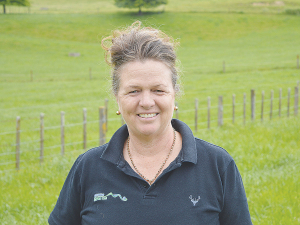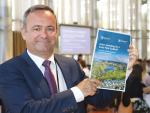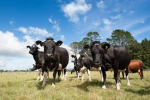For the first time in 17 years, DairyNZ wants farmers to contribute more cash to run the industry-good organisation.
Under the commodity levies act, DairyNZ can ask farmers to front up with up to 5c/kgMS from their milk cheques. But in the 17 years of DairyNZ's existence, dairy farmers have only been levied 3.6c/kgMS.
DairyNZ chair Tracy Brown told Rural News that the 3.6 cents levy is no longer sustainable to keep the organisation running and to invest in new projects to meet the challenges dairy farmers face now and into the future.
To that end, the industry good organisation has embarked on a major feedback exercise to find out just how much more farmers are prepared to pay. They have set up a feedback form on their website and are running information events right throughout the country over the coming months.
The board has put up two options - the first is just to maintain the status quo in terms of service delivery and to do that they need to raise the levy by between 4.4c and 4.6c/kgMS. The second option called the 'accelerator option' would see the levy rise to the maximum possible under the Act - 5c/kgMS.
At present based on the 3.6c/kgMS levy a dairy farmer who produces 100,000 kgMS pays $3,600 but if the levy was increased to 4.4c/kgMS they would pay an additional $800 on 100,000 kgMS.
If there was support for a 5c levy the extra cost per 100,000 kgMS would be $1,400.
New Strategy
Tracy Brown says in the past year DairyNZ has conducted a very detailed review of its business, has produced a new strategy, changed some priorities and configured the workforce of the organisation to meet the needs of the strategy.
She says the reason they have kept the levy low over the past few years was because the organisation drew down about $3-4 million of its reserves gained in the 1990s to effectively subsidise the present activities.
"But we can't go on this way anymore. For example, over the past 10 years, government has cut our science funding by 60% and the amount of money coming in from the present levy has plateaued. We have also looked at developing new partnerships, but in the end, there isn't enough money coming in to properly run the business," she says.
Brown says the 4.6c option will essentially mean business as usual, while the 'accelerator' or stretch option is about future proofing the industry and having the money to do research into challenges that the industry faces now and will do so in the future.
"So, what I really want to know is if farmers have the appetite and willingness to invest in their future and the future of dairying and people that will run their business after them," she says.
Brown says dairy farmers should not be surprised at this latest consultation process because it was signalled to them at last year's annual meeting.
It should be pointed out the present 'consultation' is not a binding referendum - rather a process to suss out the feelings of dairy farmers to invest more in their organisation. Arguably the time for this consultation could be said to be perfect, with some optimistic predictions around the farmgate milk price for this season.



















